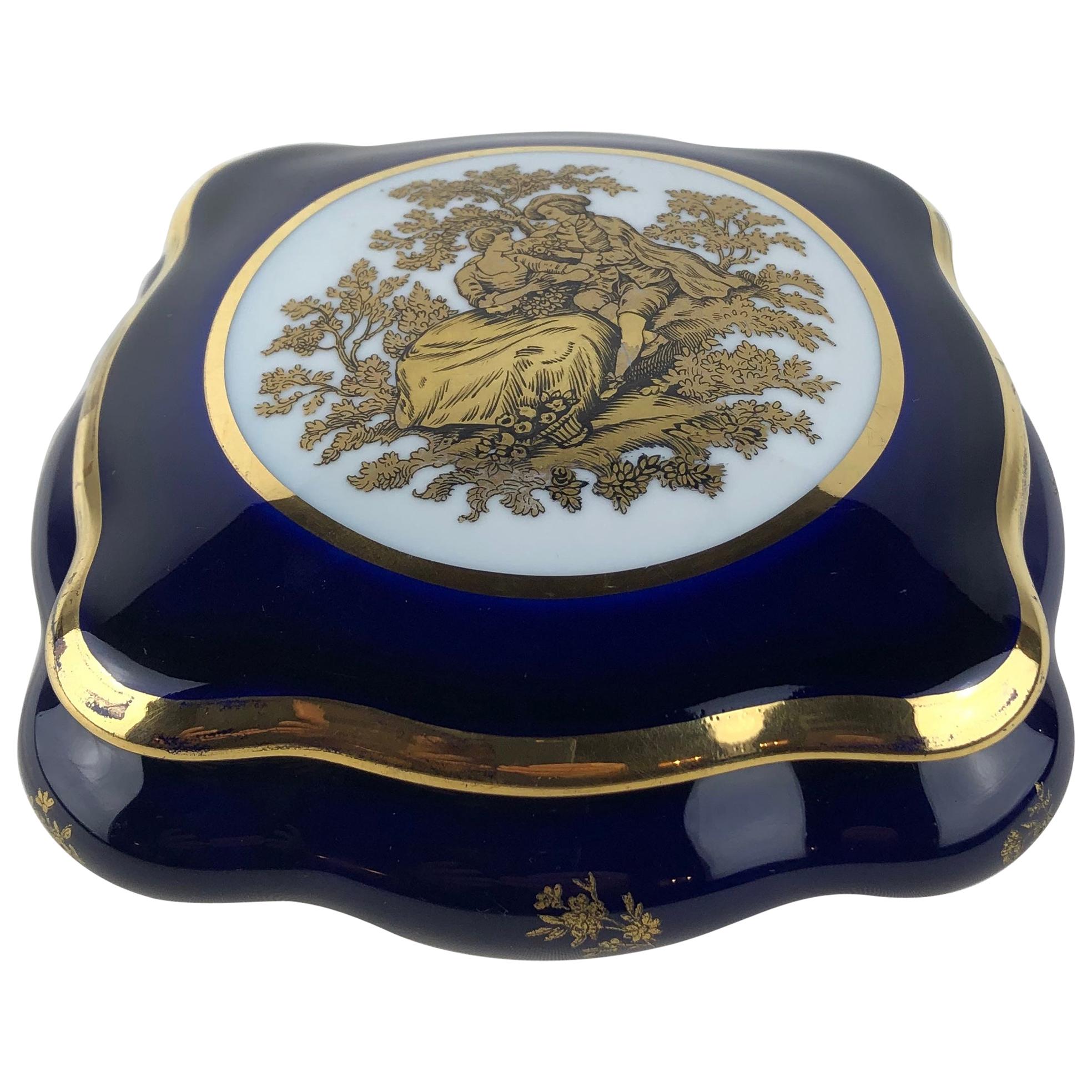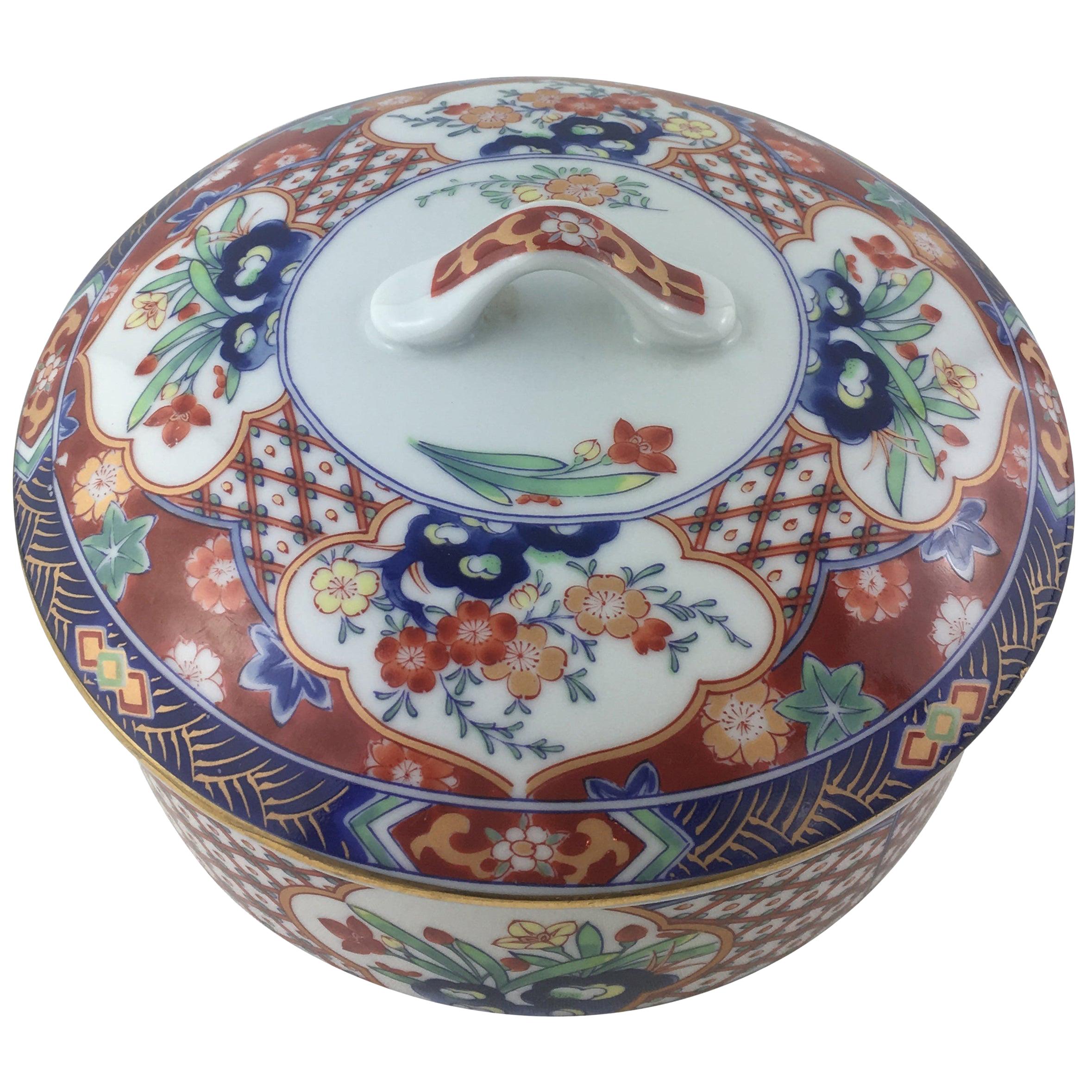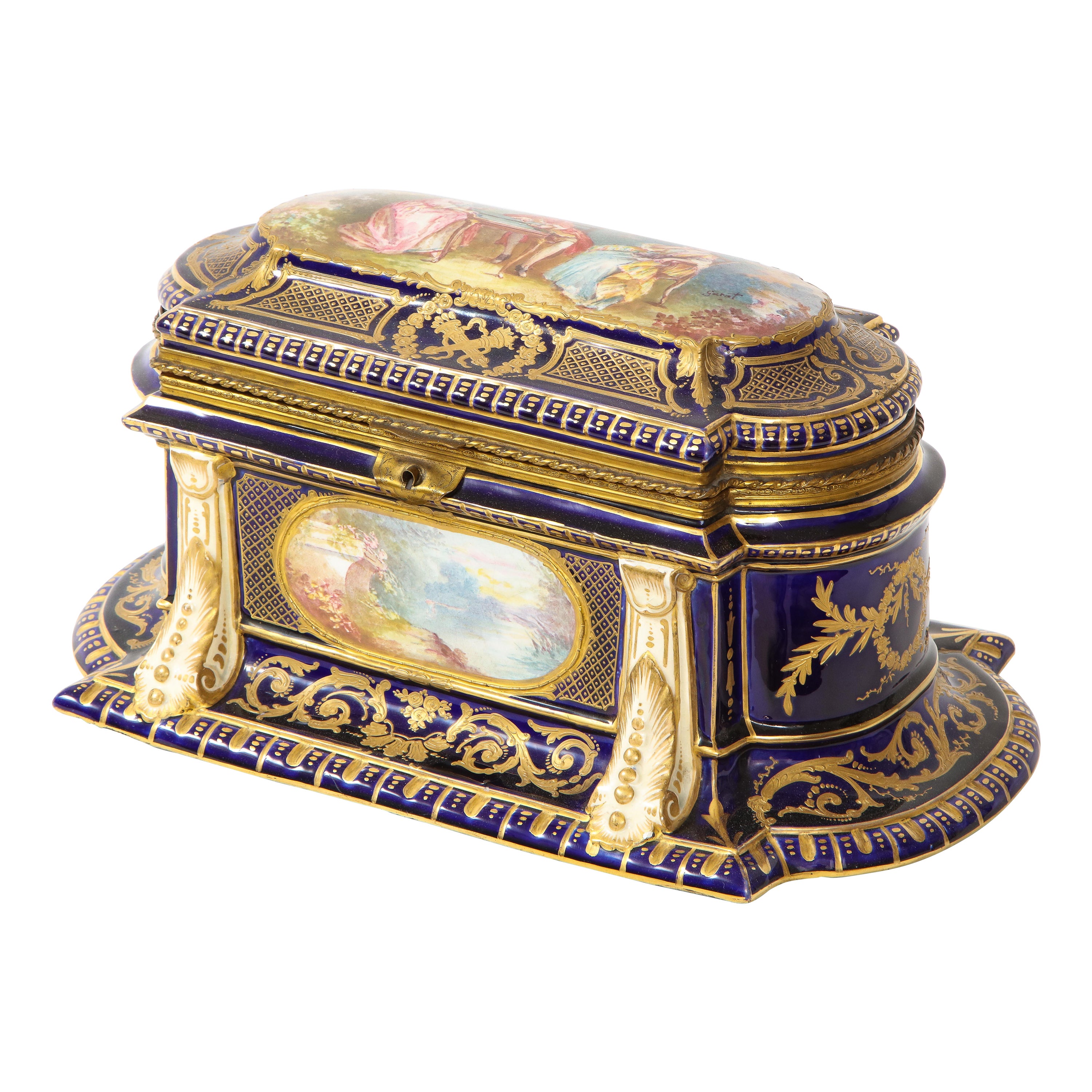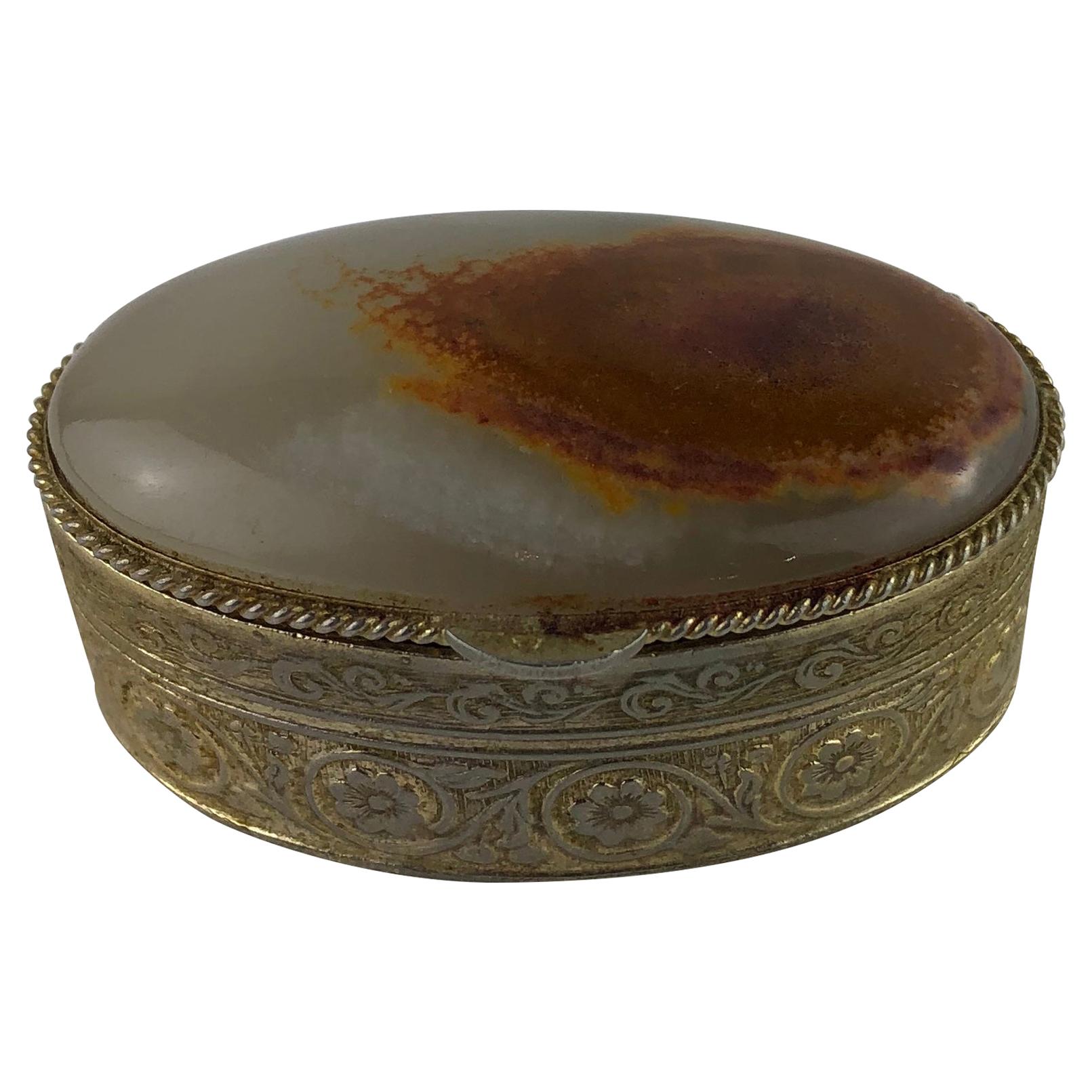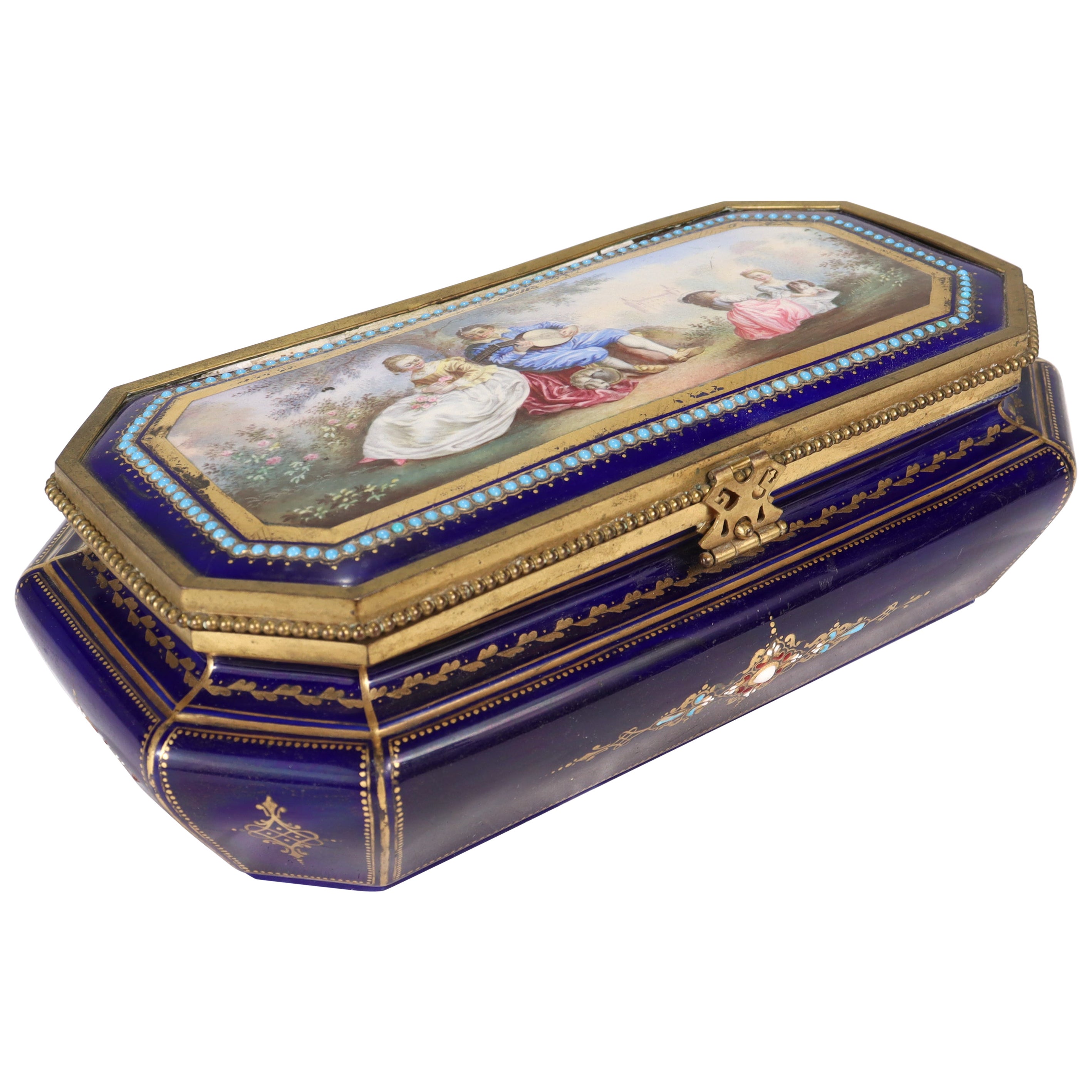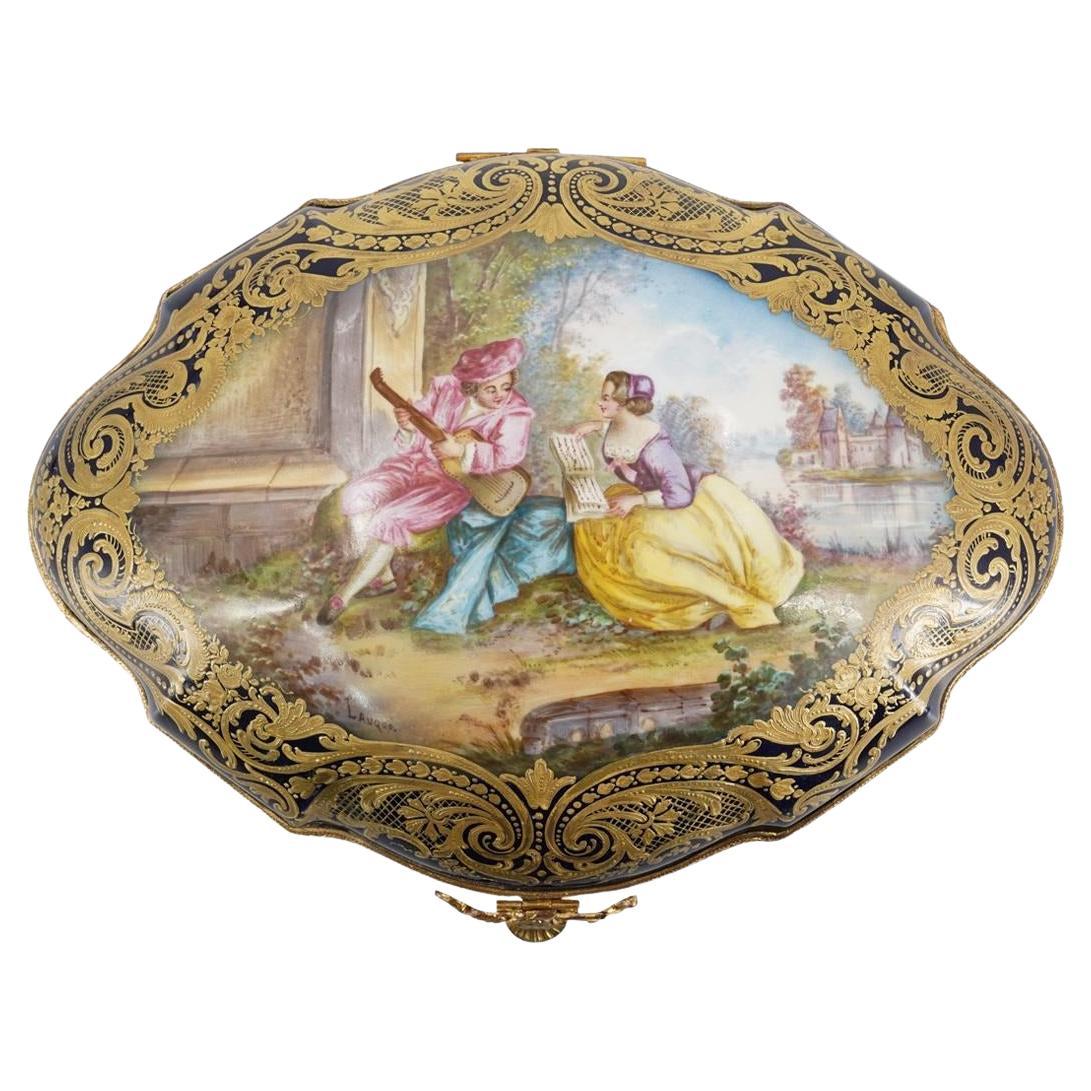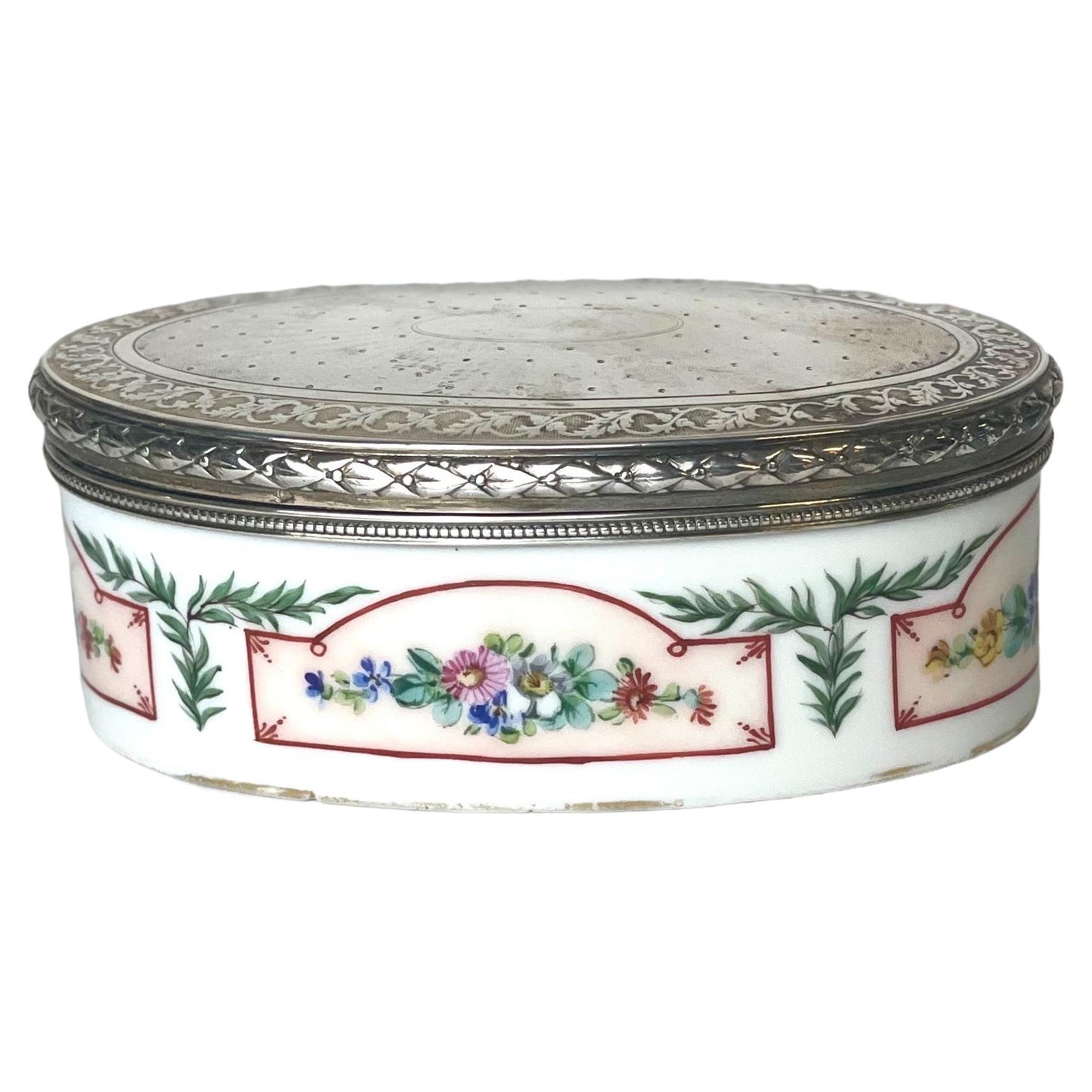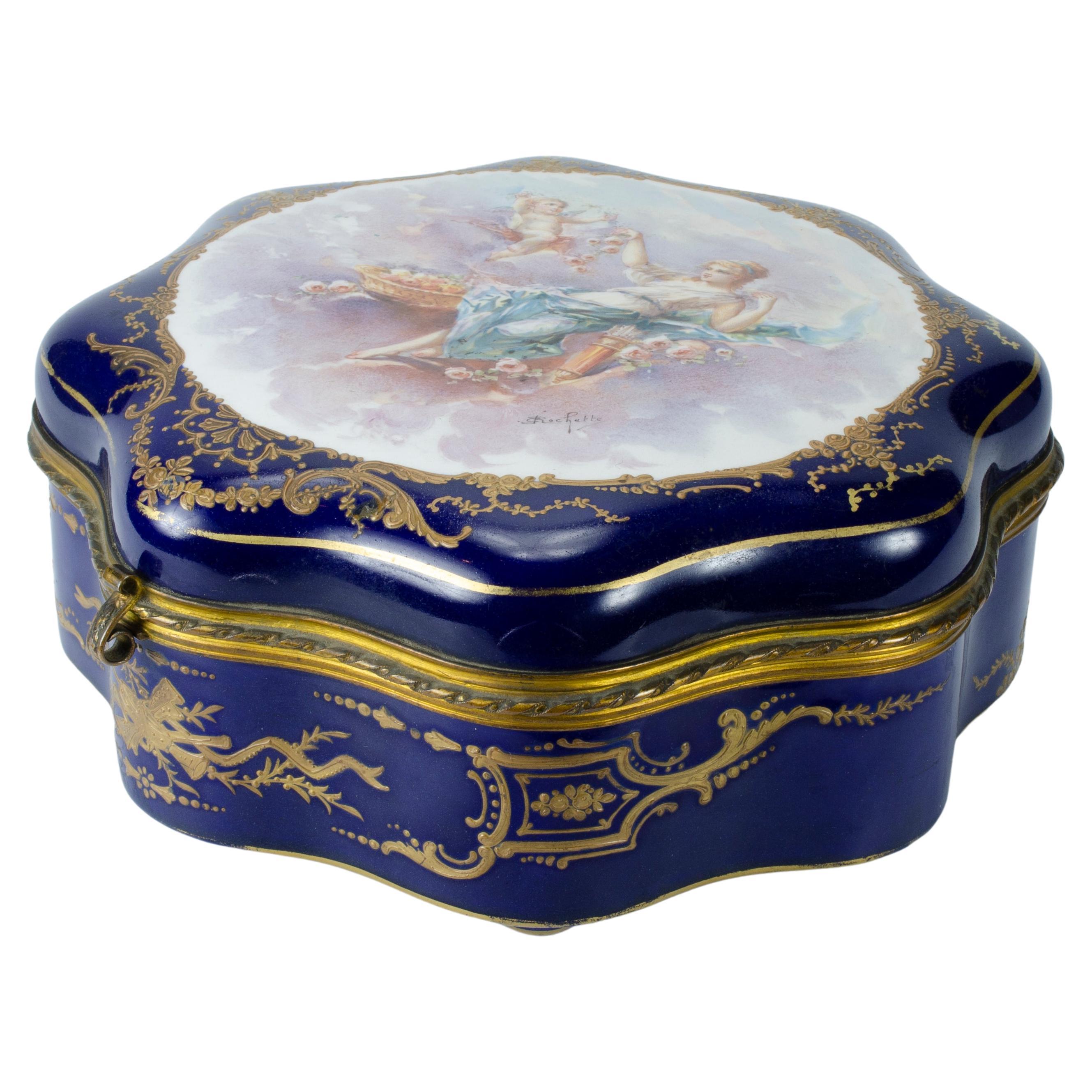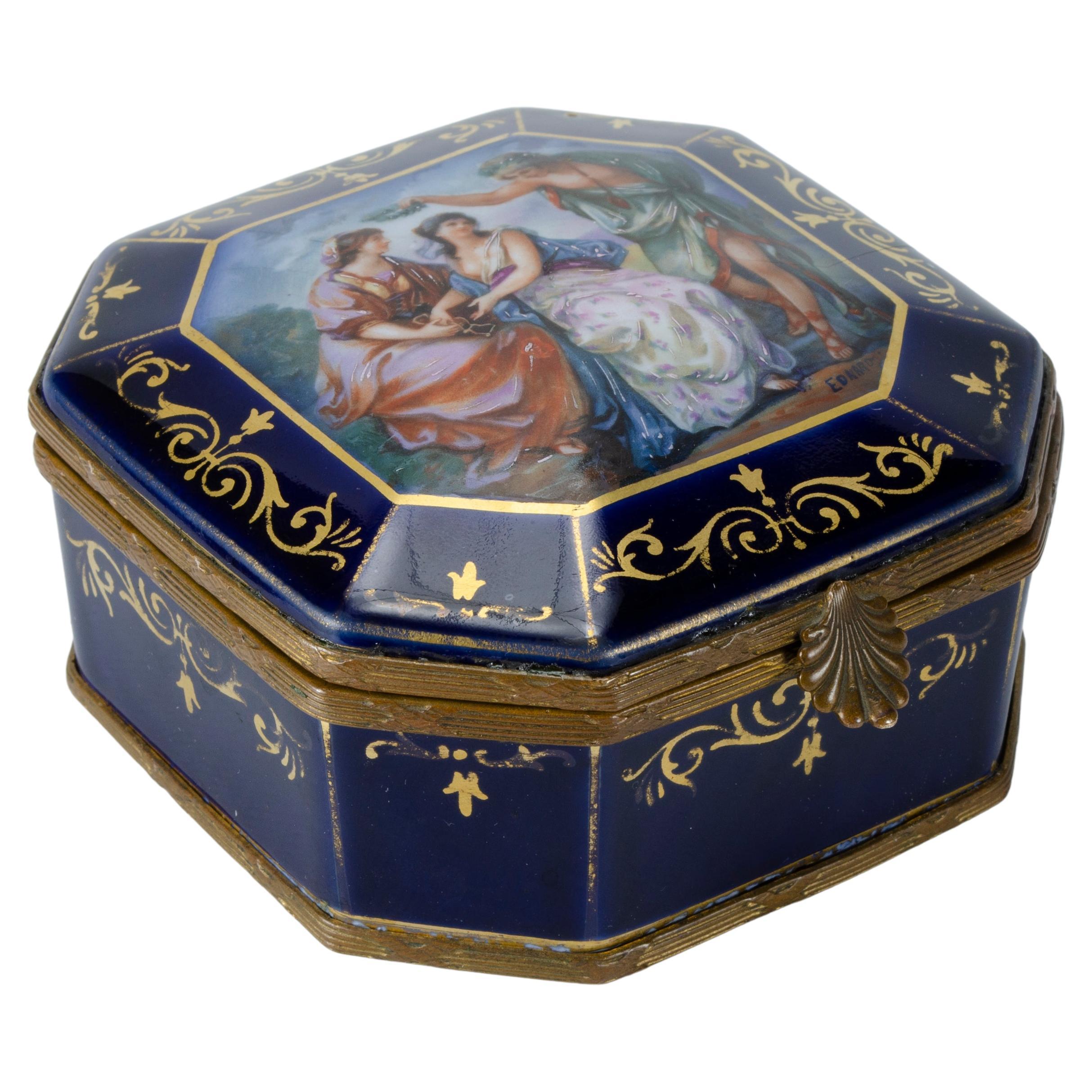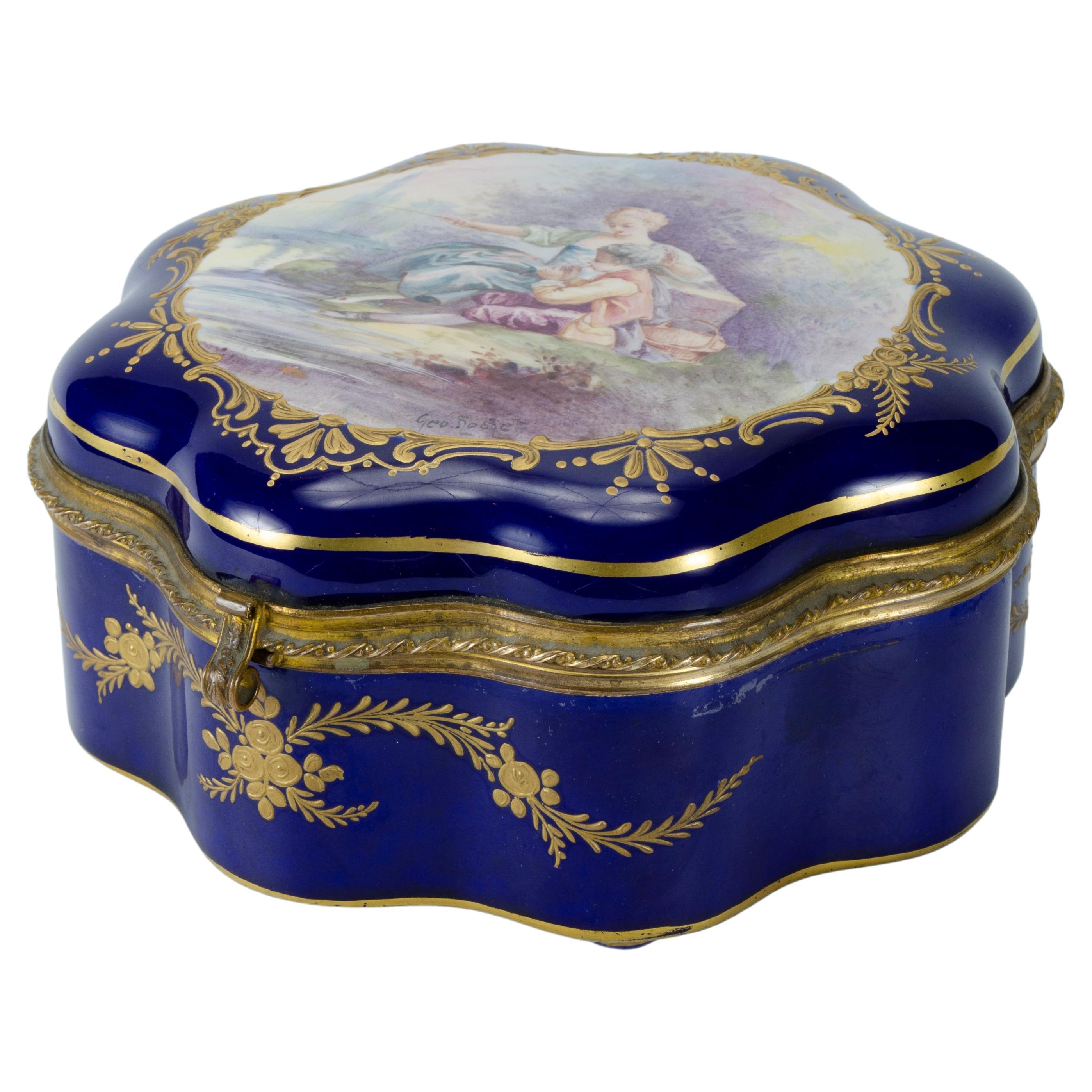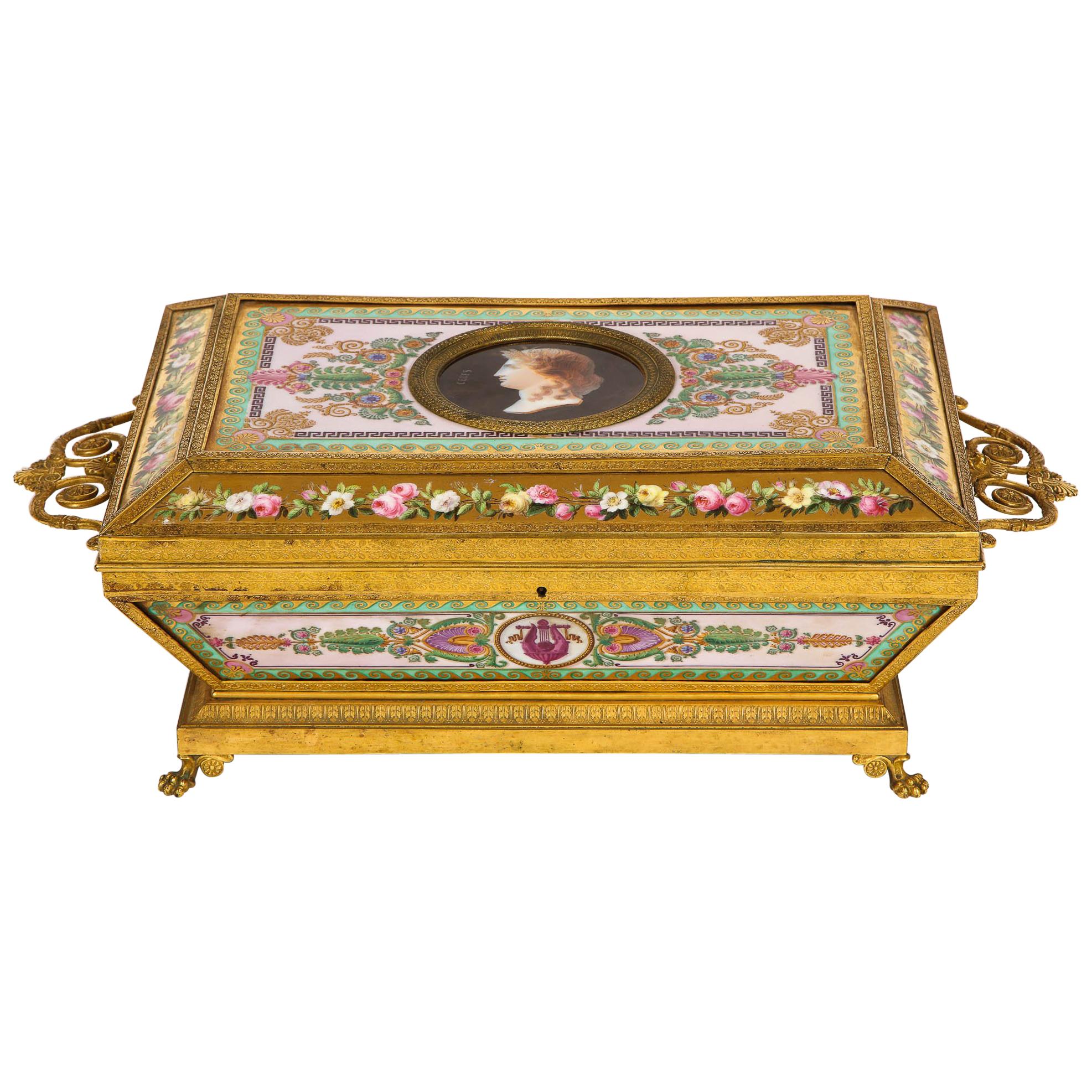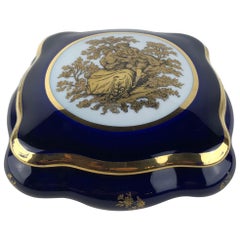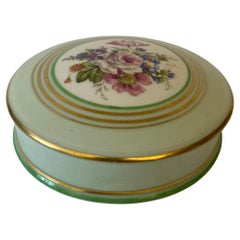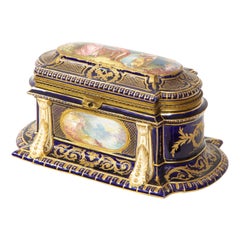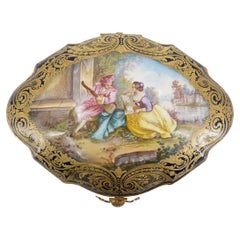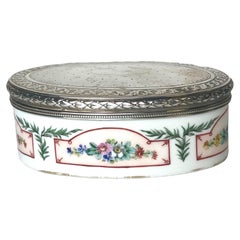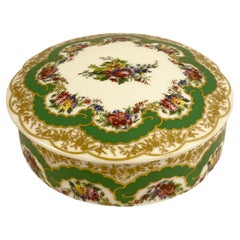
Sevres Style Porcelain Lidded Candy Dish or Jewelry Box
View Similar Items
Want more images or videos?
Request additional images or videos from the seller
1 of 8
Sevres Style Porcelain Lidded Candy Dish or Jewelry Box
Price:$625
About the Item
- Similar to:Manufacture Nationale de Sèvres (Manufacturer)
- Dimensions:Height: 2 in (5.08 cm)Diameter: 5.5 in (13.97 cm)
- Style:Louis XVI (In the Style Of)
- Materials and Techniques:
- Place of Origin:
- Period:
- Date of Manufacture:20th Century
- Condition:Wear consistent with age and use. Perfect condition, no cracks or chips.
- Seller Location:Miami, FL
- Reference Number:1stDibs: LU4082136700042
About the Seller
4.9
Gold Seller
Premium sellers maintaining a 4.3+ rating and 24-hour response times
Established in 2014
1stDibs seller since 2018
564 sales on 1stDibs
Typical response time: 2 hours
Authenticity Guarantee
In the unlikely event there’s an issue with an item’s authenticity, contact us within 1 year for a full refund. DetailsMoney-Back Guarantee
If your item is not as described, is damaged in transit, or does not arrive, contact us within 7 days for a full refund. Details24-Hour Cancellation
You have a 24-hour grace period in which to reconsider your purchase, with no questions asked.Vetted Professional Sellers
Our world-class sellers must adhere to strict standards for service and quality, maintaining the integrity of our listings.Price-Match Guarantee
If you find that a seller listed the same item for a lower price elsewhere, we’ll match it.Trusted Global Delivery
Our best-in-class carrier network provides specialized shipping options worldwide, including custom delivery.More From This Seller
View AllLimoges Porcelain Lidded Candy Dish Trinket or Jewelry Box French
Located in Miami, FL
Beautiful hand painted Limoges porcelain candy dish, trinket, or jewelry box.
This gorgeous French jewelry box is adorned with traditional decor...
Category
20th Century French Napoleon III Porcelain
Materials
Porcelain
$395 Sale Price
20% Off
Japanese Hand-Painted Porcelain Lidded Serving Dish, Trinket or Jewelry Box
Located in Miami, FL
Beautiful Japanese hand painted porcelain decorative trinket, pill or jewelry box or serving dish of Meiji period.
The decoration cons...
Category
Antique Late 19th Century Japanese Meiji Porcelain
Materials
Porcelain
Antique Limoges Porcelain Jewelry Box or Lidded Candy Dish
By Limoges
Located in Miami, FL
Beautiful Limoges porcelain hand crafted and hand painted gold trimmed trinket, jewelry box or lidded candy dish, circa 1930.
Marked, see photos.
...
Category
Early 20th Century French Mid-Century Modern Jewelry Boxes
Materials
Porcelain
$295 Sale Price
26% Off
French Neoclassical Lidded Pill, Trinket or Small Jewelry Box
Located in Miami, FL
Beautiful handcrafted lidded pill, trinket, or small jewelry box.
Intricately designed brass bottom, amber and quartz top.
Makes a lovely gif...
Category
20th Century French Porcelain
Materials
Quartz, Brass
$225 Sale Price
23% Off
French Art Nouveau Enameled Glass Trinket or Jewelry Box by Legras
Located in Miami, FL
Beautiful hand decorated, Art Nouveau enameled glass trinket, or jewelry box. This is a gorgeous piece by Legras, makes a lovely gift to oneself or others.
Measures: 4 1/8" Diameter x 3 1/4" Height
Legras Art Glass...
Category
20th Century French Art Nouveau Porcelain
Materials
Alabaster
$236 Sale Price
20% Off
French Limoges Hand Painted Gold Trim Trinket Jewelry Box or Candy Dish
By Limoges
Located in Miami, FL
Beautiful Limoges handcrafted and hand painted gold trimmed trinket, jewelry box or candy dish, circa 1930.
Signed, Jammet Seignolles Limoges (history of this maker below).
Glazed.
Measures: 4 3/8" Diameter x 2 1/4" high.
Very good antique condition, no cracks or chips.
In 1825, François BAIGNOL moved to LA FABRIQUE, on the edge of the Brigueuil forest and founded...
Category
Early 20th Century French Napoleon III Serving Pieces
Materials
Porcelain
$360 Sale Price
48% Off
You May Also Like
Very Rare 19th C. Cobalt Blue Ground Sevres Porcelain Jewelry Box
By Manufacture Nationale de Sèvres
Located in New York, NY
A very large and unusual 19th century French Louis XVI style dore bronze mounted Sevres cobalt blue ground box signed Sarat. This box is truly a masterpiece. Sevres boxes...
Category
Antique 1860s French Louis XVI Decorative Boxes
Materials
Bronze
$20,800 Sale Price
20% Off
Antique Hand Painted Jeweled French Sevres Type Cobalt Blue Porcelain Table Box
By Manufacture Nationale de Sèvres
Located in Philadelphia, PA
A very fine antique Sevres style French porcelain dresser box or casket.
With extensive gilt highlights and turquoise, red & white enamel jeweling throughout.
Decorated to the ...
Category
Early 20th Century French Belle Époque Decorative Boxes
Materials
Porcelain
19th Century Sevres Style Porcelain Dresser Box / Jewelry Casket
By Manufacture Nationale de Sèvres
Located in New York, NY
Large antique (late 19th century) Sevres style porcelain jewelry casket or bonbon box in the French Louis XV / XVI style. 12 1/4 by 9 by 4 3/4 inches. With fine gilding and hand-painted designs including top depicting lovers seated in a pastoral setting. Signed Lauque. Underside with an old Brazilian consumption tax stamp, reading "CONSUMO BRASIL", dating from the second quarter of the twentieth century that carries a value of 2000 Reis (Real, the Brazilian currency...
Category
Early 20th Century French Louis XV Jewelry Boxes
Materials
Bronze
Sterling Silver, Lidded Porcelain Trinket or Snuff Box
By Manufacture Nationale de Sèvres
Located in LA CIOTAT, FR
A charming little sterling silver-lidded porcelain box, possibly used for snoring snuff, or for general trinkets. The silver top is decorated in Louis XVI style, and bears the Minerv...
Category
Antique 18th Century French Louis XVI Decorative Boxes
Materials
Silver
Sevres Porcelain Box
By Manufacture Nationale de Sèvres
Located in Buenos Aires, Argentina
Sevres porcelain box
octagonal format
Hand painted and signed on its base
perfect condition
Origin France Circa 1900
its mount is gilded bronze.
Category
Antique Early 1900s French Neoclassical Decorative Boxes
Materials
Bronze
$1,520 Sale Price
20% Off
Sevres Porcelain Box
By Manufacture Nationale de Sèvres
Located in Buenos Aires, Argentina
Sevres porcelain box
Origin France Circa 1900
Interior decoration (flowers)
bronze mount
hand painted box.
Category
Antique Early 1900s French Neoclassical Decorative Boxes
Materials
Bronze
